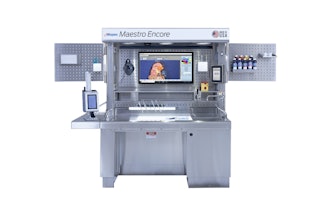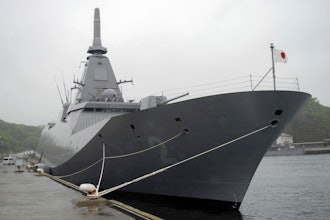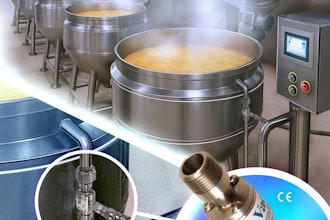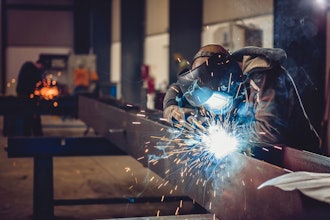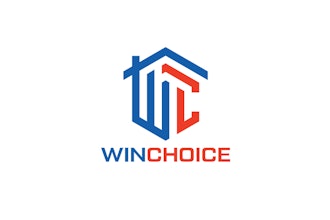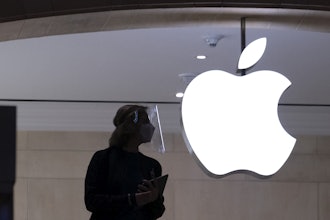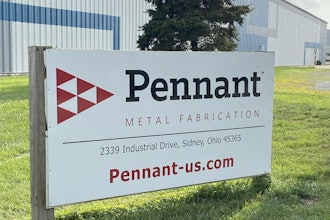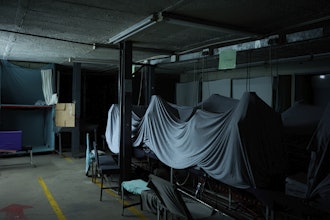Industrial manufacturing companies sometimes feel they’re at the mercy of shifting government policies around environmental regulations, energy consumption and other hot-button political issues. Any change in environmental policy could require a cascade of process adjustments, equipment upgrades and other changes that, despite their good intentions, can strain already tight budgets. And, with the potential for those shifts to swing wildly every few years with changes in Congress and the White House, it can be extremely tough for companies to adapt and still meet production demands.
One such change is coming down the pike soon: initially introduced in 2007, a second phase of lighting efficiency rules are set to go into effect next year, prohibiting the sale of lightbulbs that emit less than 45 lumens per watt. This would essentially eliminate all basic incandescent and halogen bulbs from the market—a move that will not only impact consumers, but industrial customers as well.
The Industrial Lighting—Energy Connection
While it might seem like a minor change in the grand scheme, industrial lighting actually has the potential to play a huge role in reshaping America’s energy economy. With most facility lights left on 10 to 24 hours a day, industrial lighting consumes 58 terawatt hours each year—enough power to light a third of all homes in the U.S.1 And, with 144 million industrial lighting fixtures in place2, more than 90 percent of which are conventional fixtures3, switching out from older, less efficient fixtures might seem like a tall order. But, there’s a tremendous potential for U.S. industrial facilities to upgrade lighting in order to cut energy use and the related pollution output.
In fact, data shows that switching to high-efficiency industrial LEDs could cut U.S. industrial energy consumption by 52 terawatt hours4, reducing carbon emissions by 28 million metric tons per year5. Not to mention, by eliminating the need to dispose of pollutant-containing conventional bulbs, the switch to LED would also drastically reduce mercury contamination in the soil.
But, regardless of the compelling environmental benefits, a plant-wide LED lighting upgrade does require a certain level of investment. And, being forced into a change due to shifting political policy can be a tough pill to swallow, especially when the winds could change again at any time.
Good for the Environment and Your Bottom Line
However, investing in industrial LED lighting can be a smart move for your own company’s sake, too, beyond just meeting governmental mandates. Obviously, lower energy consumption directly correlates with lower energy costs, which means a healthier bottom line. At the Zero Mountain cold storage facility, for example, a change out to LED fixtures cut its total energy use by more than 1.3 million kWh, saving the company nearly $100,000 per year. At Rockline Industries, the company cut its energy costs from $100,000 to just $25,000 by switching to LED fixtures.
Energy savings are only part of the story. Because of their longer life performance, industrial LED fixtures also help companies dramatically reduce their lighting maintenance costs. At the NLMK Pennsylvania steel mill, the company has saved at least $50,000 in annual maintenance costs, which could double as the facility continues to convert to LED. The savings is comprised of material costs and labor, not to mention the value of eliminating the lost production time caused by shutting down equipment just to change burned out bulbs.
A Safer, Brighter Facility Saves Money
Industrial LED lighting can also substantially improve plant safety, which lowers incident rates and the potential for workers compensation insurance claims. Occupational injuries cost roughly $250 billion per year6, and poor lighting is the leading cause of slip, trip, and fall accidents, as well as contact with objects and equipment, which are the most common types of incidents, second to transportation accidents.7
LED fixtures emit light that’s a much higher CRI compared to conventional fixtures, which enhances visibility and color clarity for employees. Research shows that this better visibility helps to improve employees’ trip hazard detection by nearly 25 percent and helps increase peripheral motion detection by nearly 80 percent.8
It’s no surprise then, that improving illumination can help lower accident rates by as much as 60 percent9, which makes for a safer environment and a potentially lower insurance bill. As an added bonus, at the NLMK facility, the improved light clarity that resulted from upgrading to LED also led to a dramatic improvement in visibility on its HD closed-circuit video monitoring system, helping security teams keep the facility better protected and enhancing the company’s investment in the video monitoring system.
Studies also show that the crisp clear light of modern LEDs makes for a more comfortable and invigorating work environment where employees feel more alert. With fatigue and drowsiness being key contributors to accidents and injuries10, the white light of LEDs has shown to reduce fatigue by a factor of 5 by mimicking a daylight appearance that helps to suppress melatonin levels11. This increased alertness has shown to improve workers’ performance on standardized exams and also decrease the time it took to take the test10. That means greater accuracy and efficiency, which in a workplace environment translates to higher performance and productivity.
Industrial LED Lighting Puts You Ahead of the Standards
While regulatory mandates that force industrial manufacturers to change the way they do business may at first seem like obstacles to productivity and profitability, the reality is that switching to more sustainable, high-efficiency LED industrial lighting has far greater benefits than just meeting a mandate. The lower energy and maintenance costs, improved plant safety and efficiency can drive real bottom-line benefits that contribute directly to operational advantages, while also insulating any company against the shifting winds of political policy.
Luis Ramirez is chief operations officer at Dialight.
1U.S. Dept. of Energy, “Lighting Market Characterization”; ECG analysis
2U.S. Dept. of Energy, Lighting Market Characterization, Tables 4-1, 4-22
3U.S. Dept. of Energy, “Energy Savings Forecast”, p. 18
4U.S. Dept. of Energy, “Adoption of Light-Emitting Diodes in Common Lighting Applications” (2017), ECG analysis
5U.S. Environmental Protection Agency, “Regulatory Impact Analysis for the Final Mercury and Air Toxics Standards”; U.S. Dept. of Energy, “Lighting Market Characterization”; https://www.epa.gov/greenvehicles/greenhouse-gas-emissions-typical-passenger-vehicle-0; ECG analysis
6Leigh J.P., “Economic Burden of Occupational Injury and Illness in the United States”
7U.S. Dept. of Labor, Census of Fatal Occupational Injuries Summary, 2016; Occupational Health and Safety Administration, Mine Safety and Health Administration
8Centers for Disease Control, National Institute for Occupational Safety and Health
9Abdou, “Effects of Luminous Environment on Worker Productivity in Building Spaces”
10Edwards, NREL, “A Literature Review of the Effects of Natural Light on Building Occupants”
11Falchi, ““Limiting the impact of light pollution on human health, environment and stellar visibility”










